Annapolis, Maryland is a historical city of about 35,000 people and the capital of Maryland. Located on Chesapeake Bay in the southeast corner of the much larger Baltimore-Washington Metropolitan Area, a region which houses over 8.2 million residents, Annapolis is roughly 30 miles from both downtown Washington, D.C. and downtown Baltimore.
Annapolis has a rich history which spans from the pre-Colonial era to the present, and was even the nation’s capital for about six months in the 1780s. Today, a modern Annapolis is an important regional node in the Baltimore-Washington area and thrives off revenues from the sailing and tourism industry, as well as from being a hub for military infrastructure and commercial and agriculture distribution. In addition, Annapolis is a super-regional retail hub, due in part to its almost predestined importance spanning back throughout history, but also due to an opportunistic market seizure in 2007 on the part of Westfield’s Annapolis Mall – or, Westfield Annapolis as they officially call it, but don’t worry, we won’t.
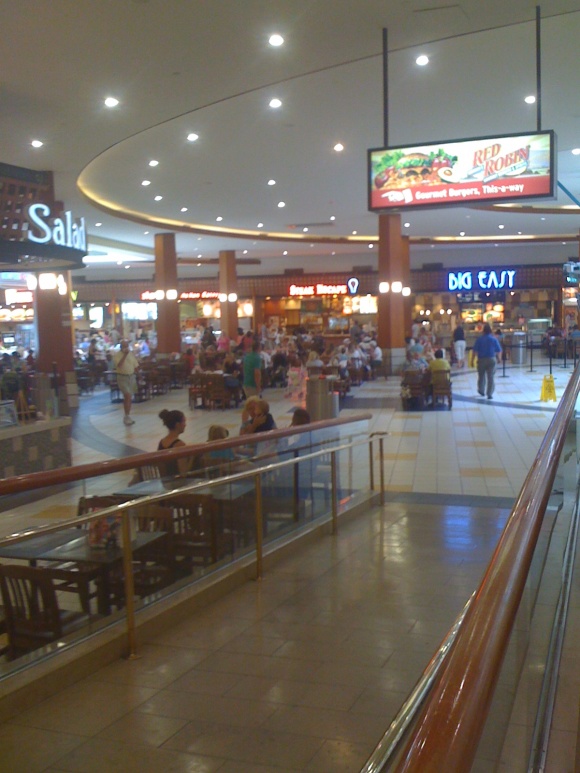 Opened in 1980, Annapolis Mall is currently the largest mall in the state of Maryland, including the area surrounding metro Baltimore and the Maryland side of the Washington, D.C. area. However, a whopping four malls on the Virginia side of metro D.C. are bigger than Annapolis Mall: Springfield Mall, Tysons Corner Center, Potomac Mills, and Fair Oaks Mall. Springfield Mall, which we’ve covered here, is a troubled red giant in a crowded (and fiercely competitive) retail galaxy, but the Tysons MegaMall Googolplex, Potomac Mills and Fair Oaks are certainly formidable super-regional destinations in their own right.
Opened in 1980, Annapolis Mall is currently the largest mall in the state of Maryland, including the area surrounding metro Baltimore and the Maryland side of the Washington, D.C. area. However, a whopping four malls on the Virginia side of metro D.C. are bigger than Annapolis Mall: Springfield Mall, Tysons Corner Center, Potomac Mills, and Fair Oaks Mall. Springfield Mall, which we’ve covered here, is a troubled red giant in a crowded (and fiercely competitive) retail galaxy, but the Tysons MegaMall Googolplex, Potomac Mills and Fair Oaks are certainly formidable super-regional destinations in their own right.
Annapolis Mall has weathered many anchor changes and two significant additions since it opened 30 years ago. When Annapolis Mall originally debuted, it was anchored by D.C.-based Garfinckels, Hecht’s, and Montgomery Ward. In 1987, an 84,000 square-foot JCPenney store was added at what was then the east end of the mall. In 1990, the Garfinckel’s closed, and the site was eventually repurposed into a Borders Bookstore. In 1994, an expansion and Seattle-based Nordstrom were added to the northeast end of the mall past JCPenney, adding 200,000 square feet of retail space, and in 1998 Lord and Taylor was added on the northwest side, across from JCPenney. The next year, in 1999, Montgomery Ward closed amid bankruptcy. To replace the Wards store, Sears moved from nearby failed Parole Plaza, an outdoor center, in 2002. Finally, in 2006, Hecht’s, a May Company store, was sold to Federated/Macy’s, which converted Hecht’s and all the other May nameplates to Macy’s in September 2006.
Even with all the anchor changes and additions, the biggest change at Annapolis Mall in its 30-year history took place in 2007, when an expansion added 220,000 square-feet of retail space to the mall, nearly doubling the in-line space. No new anchors were added, but the Lord and Taylor store, which the new corridor runs through, was renovated. The new expansion is called the “west wing”, and the older, original configuration of the mall is called “east wing”, even though from an aerial perspective they look like they should be aligned more north versus south, respectively.
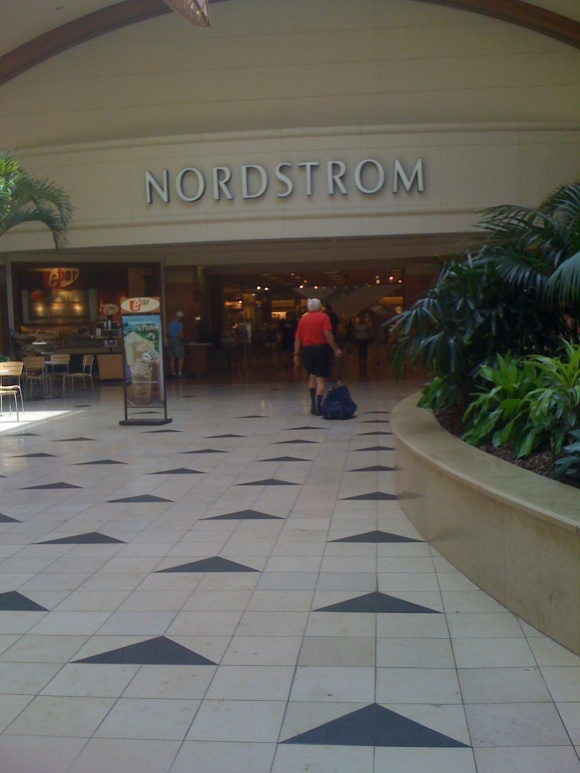 Annapolis Mall’s current configuration is now quite unique and far more interesting than it was prior to the 2007 expansion. The older part of the mall, which consists of a straight shot of in-line space in a corridor between Macy’s and Nordstrom, is twinned with a new, parallel corridor that goes from Macy’s, through Lord and Taylor, up to Nordstrom again. In addition, a smaller diagonal wing connects the Borders/Sears end of the mall with Macy’s, and the entire mall is one level. Confused? A complete directory is located here.
Annapolis Mall’s current configuration is now quite unique and far more interesting than it was prior to the 2007 expansion. The older part of the mall, which consists of a straight shot of in-line space in a corridor between Macy’s and Nordstrom, is twinned with a new, parallel corridor that goes from Macy’s, through Lord and Taylor, up to Nordstrom again. In addition, a smaller diagonal wing connects the Borders/Sears end of the mall with Macy’s, and the entire mall is one level. Confused? A complete directory is located here.
The decor at Annapolis Mall isn’t at all seamless between the original mall and the expansion, with the expansion having a more modern look with higher ceilings and atriums, while the older part of the mall looks more traditional and even slightly dated (hey, that’s not so bad…). The older part of the mall also contains several fountains, though curiously they are all apparently newer than expected, as all of the old fountains were ripped out in a mid-90s remodel.
The dominance of Annapolis Mall can be analyzed in at least a few ways. First, the lack of dominant, super-regional retail centers in the south suburbs of Baltimore and the eastern suburbs of D.C. created a void that Westfield saw fit to fill in 2007. Most of the malls in the eastern suburbs of D.C. are smaller and more neighborhood/regional oriented, and this is likewise for the suburban area south of Baltimore. Furthermore, none of them are upscale-oriented like Annapolis. Arundel Mills, which was the largest mall in Maryland before Annapolis Mall’s expansion, is an immensely popular mall but fills a niche of a different kind – it’s an outlet mall – and therefore provides a different type of consumption. The expansion at Annapolis brought in many more upscale stores, and thus provides a different type of shopping experience than Arundel Mills. In short, the two can probably co-exist due to low overlap.
The addition of almost solely upscale stores in the expansion leads us to another analysis for the latent dominance of Annapolis as regional retail heavyweight. Annapolis is wealthy, and so too are many of the enclaves nearby. In addition, wealthy people from both the eastern suburbs of D.C. as well as the southern suburbs of Baltimore will go out of their way for the offerings and selection here. Also, Annapolis Mall has weathered the recent economic meltdown extremely well. Even with the crash of the economy, beginning in 2008, the loss of stores has been held to a minimum, and quite a few of the losses at that were the result of failed experiments on the national level and not limited to this specific location (Ruehl, Martin+Osa).
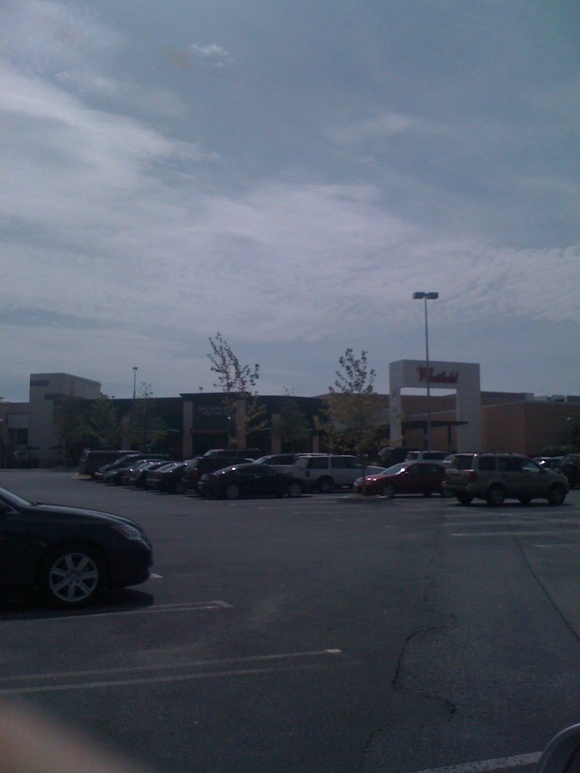 This expansion has also inspired synergy, resulting from the neighboring retail areas around Annapolis Mall working with it instead of competing against it. The 2007 expansion at Annapolis Mall came just one year prior to the total redevelopment of a failed outdoor mall, Parole Plaza, located just a few blocks away. Parole Plaza was a decades-old outdoor mall, anchored by D.C.-based Woodward and Lothrop and Sears. Most of it died in the late 1990s and was torn down in 2004, to make way for an upscale lifestyle center called Annapolis Towne Centre at Parole. Featuring New Urbanist features like forced density, different styles of housing, grocery, and upscale shops and restaurants, this new development is working in tandem with Annapolis Mall to acquire and keep upscale shoppers busy in the area. Developers of the new lifestyle center realize that working with Annapolis Mall, while at the same time keeping the same upscale theme, will help them rather than hurt them, as Annapolis Mall delivered crushing blows to Parole Plaza a decade earlier.
This expansion has also inspired synergy, resulting from the neighboring retail areas around Annapolis Mall working with it instead of competing against it. The 2007 expansion at Annapolis Mall came just one year prior to the total redevelopment of a failed outdoor mall, Parole Plaza, located just a few blocks away. Parole Plaza was a decades-old outdoor mall, anchored by D.C.-based Woodward and Lothrop and Sears. Most of it died in the late 1990s and was torn down in 2004, to make way for an upscale lifestyle center called Annapolis Towne Centre at Parole. Featuring New Urbanist features like forced density, different styles of housing, grocery, and upscale shops and restaurants, this new development is working in tandem with Annapolis Mall to acquire and keep upscale shoppers busy in the area. Developers of the new lifestyle center realize that working with Annapolis Mall, while at the same time keeping the same upscale theme, will help them rather than hurt them, as Annapolis Mall delivered crushing blows to Parole Plaza a decade earlier.
Annapolis Mall and its environs are also convenient vacation stops for many D.C. and Baltimore residents as they make their way to shore destinations such as Rehoboth Beach, Delaware and Ocean City. In similar fashion, Annapolis Mall is also the closest large, super-regional mall for many residents of Maryland’s Eastern Shore, the nine counties in the state east of Chesapeake Bay, and to those in southern Delaware. Delaware may be tax free, but those wishing to visit Nordstrom or many of the other upscale retail stores at Annapolis Mall would come here – at least until 2011, that is, when Christiana Mall in northern Delaware will give birth to Delaware’s first Nordstrom.
We visited Annapolis Mall in Summer 2009 and took the pictures featured here. As usual, feel free to leave your own comments, experiences, historical facts and any other clarifications.
P.S. I apologize in advance for the quality of the photos. My digital camera broke in the middle of this trip so I had to use my iPhone. I didn’t actually realize they were this terrible until I uploaded them just now.
August 2009:
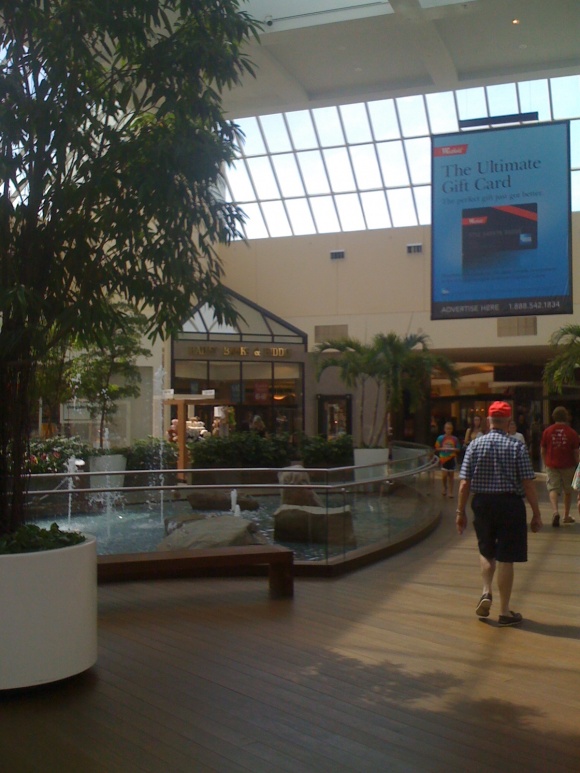 Opened in 1980, Annapolis Mall is currently the largest mall in the state of Maryland, including the area surrounding metro Baltimore and the Maryland side of the Washington, D.C. area. However, a whopping four malls on the Virginia side of metro D.C. are bigger than Annapolis Mall: Springfield Mall, Tysons Corner Center, Potomac Mills, and Fair Oaks Mall. Springfield Mall, which we’ve covered here, is a troubled red giant in a crowded (and fiercely competitive) retail galaxy, but the Tysons MegaMall Googolplex, Potomac Mills and Fair Oaks are certainly formidable super-regional destinations in their own right.
Opened in 1980, Annapolis Mall is currently the largest mall in the state of Maryland, including the area surrounding metro Baltimore and the Maryland side of the Washington, D.C. area. However, a whopping four malls on the Virginia side of metro D.C. are bigger than Annapolis Mall: Springfield Mall, Tysons Corner Center, Potomac Mills, and Fair Oaks Mall. Springfield Mall, which we’ve covered here, is a troubled red giant in a crowded (and fiercely competitive) retail galaxy, but the Tysons MegaMall Googolplex, Potomac Mills and Fair Oaks are certainly formidable super-regional destinations in their own right.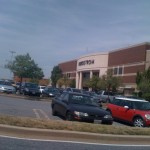
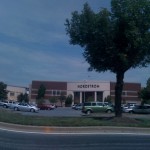
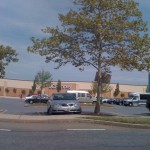
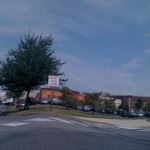
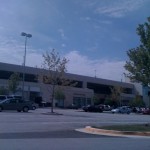
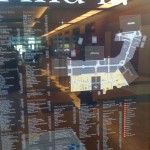
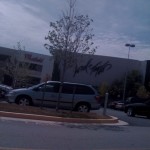
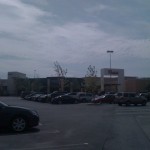
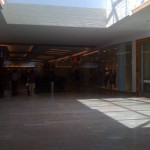
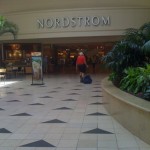
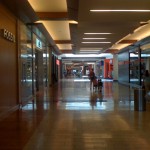
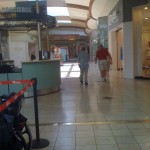
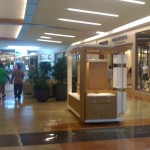
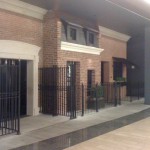
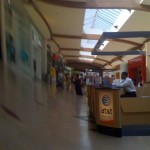
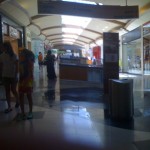
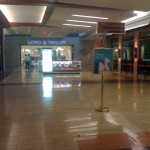
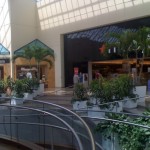
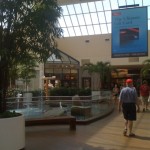
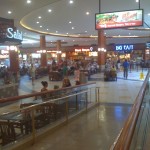
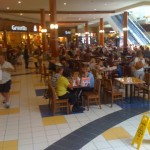
You gotta love the sans-serif Lord & Taylor sign in the one picture. Reminds me of the old Lord & Taylor Woodfield mall entrance, but cooler.
There’s also an 11-screen Bow Tie cinema at the mall. I don’t know if it is inside the building or as an outlot.
@SEAN, It’s a two-level cinema inside the mall, toward the Sears/Borders wing.
@Prange Way,
This mall is at a very good location with great highway visiblity! Nice to see the expansion has been successful…have not been since the expansion was completed. How many more fountains are there than the one pictured? I do remember the older fountains in the mall and I’m glad the new remodel brought them back.
@Prange Way, Thanks.
@mallguy,
In terms of MD malls, I’d love to see Columbia and White Flint written about in the future!
@mallguy, Look at the top photo in this post with the skylights. Is it me, or does that look somewhat like Paramus Park already on this blog.
@SEAN,
Slightly (it’s pretty much a glass ceiling at Paramus Park), but more like Garden State Plaza…maybe it’s the Westfield thing. Actually, the renovation looks like a more modern rendition of Garden State Plaza.
@mallguy, Perhaps your right. I was thinking of the smaller skylights nearest Macy’s & Sears on the sides of the courts & not the ones that makeup PP’s roof. However the one in the top photo is quite large & does resemble the enormous one in GSP where Coldwater Creek is located.
It maybe a Westfield thing, after all some design features are company specific. the best examples I can think of…
1. Taubman’s tiled floors white walls with black trim & marble planters.
2. Macerich’s off white floors & hanging domed lights.
3. Westfield’s multi-colored high-gloss floors & wall tiles.
4. NorthPark’s white brick walls.
@SEAN,
I agree with your observations. I will never forget the first time I visited Fair Oaks (Taubman Mall in Fairfax, VA). This mall looks EXACTLY like Short Hills, inside and out! It weirded me out that Short Hills has a twin…the same thing happened after I saw Danbury Fair’s renovation as it looks like a mall that I know very well.
After seeing these pics, I am very impressed what Annapolis Mall has done and I think a sidetrip is in order on my next DC trip.
@mallguy, Since Tysons Corner is owned by Macerich, does it have those domed lights & off white floors like Freehold, Danbury & Queens Center?
Speeking of those domed lights, you will find them at of all places MGM Grand @ Foxwoods as you walk between the casino buildings & I do meen walk. It’s 23 minutes end to end if you don’t make a pitstop!
@SEAN, @ Mallguy,
I forgot to add Stamford TC & the already posted Beverly Center are also Taubman twins as well. Even down to the fact that both are urban vurticle malls designed by Greenwich CT based Gordon Group.
Wait a minute! Aren’t the Taubman twins an 80s pop group? LOL
@SEAN, Tysons Corner does not have those lights.
The big expansion that added the 2nd floor was done by Lerner, but I think the 2005 expansion was done by Macerich. And since then, Macerich has been putting some of their touches in Tysons like the soft seating areas, and sadly, they ripped out the fountains. Despite that one mistake, Tysons Corner is still my favorite DC Metro area mall.
Yeah, I’ve noticed that with Beverly and Stamford…and also Westfarms (sans the urban footprint)
@mallguy, Oh yeah forgot about Westfarms. I prefer Short Hills though.
Speaking of Tysons, what’s up with the Silver line. Are they building direct access from the Tysons 123 station to both malls?
I did read in the Washington Post a few weeks ago that Fairfax County, approved the build out around the Metro Stations in the Tysons area. However the plans were cut from a 40-year to a 20-year planning horizon. The interesting thing was that about half of the land owners still don’t get the objective of the redew of Tysons in the first place. Once the stations open, these landlords want to build even more sprawl & not walkable neighborhoods.
@SEAN, Last I heard, they are, as it would be mighty difficult to cross Chain Bridge Road, considering the station will be located on that piece of land across 123, next to the Galleria. I was down there in May and they are starting to build the tracks. Don’t remember seeing any part of the station coming up.
And I agree with you, I also prefer Short Hills. It’s the best mall in NJ!
does anyone else notice that the mall is in the shape of a gun?
Happened to visit Annapolis Mall when I was in DC and Annapolis over the weekend. It’s been years since I’ve been there and wow, I was impressed. The decor inside is similar to Garden State Plaza (a Westfield thing) and it sprawls like the Florida Mall in Orlando. Stores seem very nice and there is still the larger fountain in Center Court, in front of Macy’s, still in operation.
This mall is at a visible location off US 50 and is close to both the exits for Downtown Annapolis and the intersection with I-97, which leads up to Baltimore. US 50 West empties into Washington DC, and it seems MDDOT improved this highway since the last time I was on it a few years ago.
Defintely a very nice mall!
@mallguy, How do the dining options compare to Tysons wich has a good restaurant sene. Restaurants have become as importtent to a malls bottom line in a way we have never sene before. This is do to the need for deversification of the store mix & have after hours activity.
@SEAN, It’s pretty good, actually. On the higher end, Cheesecake Factory, California Pizza Kitchen, a place I haven’t heard of – Stoney River Steakhouse, Punk’s Backyard Grill, which is local to Annapolis, and on the middle range Applebee’s and Macaroni Grill. There is also a large movie theater at the mall. Since Border’s closed, they did not replace it with a B&N, but a XXI Forever. There are your basic chains in the immediate area of the mall and in Downtown Annapolis, there are many great restaurants, both formal and casual.
Haven’t been over there in years, but Annapolis is beautiful and the mall is one of the nicer MD malls, up there with Montgomery Mall and the Mall in Columbia. And even though it’s midrange, I like White Marsh!
@mallguy, Like Anapolis, Montgomery is also Westfield owned & serves a similar demographic.
What has been happening in the mall industry as of late, the larger real estate companies have been prooning there holdings & getting rid of dead weight & over the next few years this trend will excelerate as malls like anapolis receive more atention while the others get redeveloped or just fizzle out. There have been two such anouncements since last year, Westfield wants to sell 17 marginal malls & Macerich made a similar anouncement recently. Westfield hasn’t made a move yet, Macerich may sell 3 shortly & see if the remainder garner interest & by the looks of things, the answer maybe yes.
There is another theatre with 9-screens at Anapolis Harbor Center. Montgomery also has a theatre that’s not part of a circuit.
@SEAN, I could totally see that. We’ve already seen so many dead malls in the area between Baltimore and DC…safe to say Annapolis and Montgomery Malls will be safe and stable.
Both regions, at a time, were serverely over-malled!
@mallguy, There are enough Tysons & Anapolis type malls across the country to keep all the mall companies in the black. However we are far from that point as the number of dead malls in metro DC/ Baltimore/ Anapolis for example is quite high for a population of 8.2 million & growing. Now granted two of them are in the process of becoming mixed used developments Springfield & White Flint, but others featured on the blog just fizzled away.
@SEAN, Between Landover, Owings Mills, Security Square, Landmark, Marley Station, Shops at Georgetown Park, Shops at National Place, Laurel, as well as Springfield and White Flint (which faced a near-death in the early 90s, but couldn’t outlast when figuring in its location, close proximity to Montgomery and closure of Bloomingdales) it’s quite a number of dead/dying malls in that region!
It seems that Annapolis, Columbia, White Marsh, Towson and Arundel Mills are the strongest in MD.
Was impressed with National Harbor on this DC visit (reminds me of a larger Pier Village), and it will grow, but it needs to be on the Metro!
@mallguy, There have been calls for a Metrorail extention to National Harbor as the nearest stop serving it is several miles away at Branch Avenue, but I don’t think there’s enough political support for it. Even now there have been discussions by some VA polititions of withdrawing from Metro, but most of it is political bluster.
What I don’t quite understand is why are there numerous dead malls in a tri-metro area with over 8-million residents. Now some died to demographic shifts AKA Landover & Laurel, others had location issues AKA Georgetown Park. Now the big question is… how did we get here & why ? I know it semes obvious, but some reason it puzzles me. Also consider that most DC area malls are also Metrorail accessable.
@SEAN, The Purple Line through the Maryland suburbs will happen long before an extension to National Harbor or anywhere else. The Dukkes extension was built with money from the Airport Authority not from Metro funds.
The Baltimore has Dead Malls, because of population shifts, lack of growth and a large number of malls going up in the 80s (Marley, Owings Mills, White Marsh) that killed off existing centers. This pattern began even before then with Security Square, which eclipsed Westview. The pattern has continued with Columbia usurping Ownings Mills and Annapolis surviving better than Marley. The Baltimore area hasn’t been growing, but developers still built malls and in some cases like Hunt Valley going where the population was moviing was an utter failure from the start.
The DC area has had much less in the way of Dead Malls. Georgetown Park was never a regional and its fortunes turned as the surrounding area continued to fill space. Georgetown is the kind of environment where people walk–a mall doesn’t work as well there. Chicago’s Michigan Avenue malls, except for Water Tower , have failed, as another example. Most malls in downtowns have failed. Georgetown is healthy, the mall isn’t . The same with Friendship Heights, where the little malls have died.
No new regional malls have been constructed in the DC area since the late 80s, which would explain why most of them are healthy. The most healthy have expanded and prospered and sometimes hurt smaller nearby malls–Montgomery Mall has done this to White Flint, along with the resurgences of Friendship Heights and Bethesda as shopping districts (Friendship heights had the same anchors as White Flint). Springfield & Landmark were too close together and their neighborhoods have declined. Landover is long gone and nearby Capital Plaza’s site has been redeveloped with limited success. Iverson & Marlow Heights have soldiered on as C-Malls. PG and Wheaton are probably long-term candidates for demalling but have healthy anchors and good fundamentals that would work better as power center/life style-type centers, which is more or less how they started (back when they brought downtown and national chains to the ‘burbs as open air centers). White Flint will be redeveloped as something more appropriate to the area.
Places where it has become difficult and expensive to build have fewer dead malls. The LA area has relatively few–the infrastructure that went up in the 60s and 70s is mostly what serves a much larger population today.
@Rich, Thanks.
Didn’t quite know where to put this, but macerich just sold two centers to the newly formed Rouse Properties.
Rouse Expands Footprint, Buys Two Malls for $292.5 Million
Richmond, Va., and Salisbury, Md. — Rouse Properties Inc. (NYSE: RSE), a REIT based in New York City that specializes in enclosed regional malls, has acquired Chesterfield Towne Center in Richmond, Va., and The Centre at Salisbury in Salisbury, Md. for an aggregate purchase price of $292.5 million. The two properties total nearly 2 million square feet of retail space. The Macerich Company (NYSE: MAC), based in Santa Monica, Calif., sold the malls.
“Chesterfield Towne Center and The Centre at Salisbury are key additions to our portfolio of dominant, middle-market regional malls,” says Andrew Silberfein, president and CEO of Rouse. “These malls both serve expansive trade areas with limited enclosed mall competition, supporting strong inline and anchor sales volumes.”
The 1 million-square-foot Chesterfield Towne Center is located in the Chesterfield County retail corridor, a submarket with average household income of $101,000 in a five-mile radius. Opened in 1975 and most recently renovated in 2008, the mall serves a trade area of more than 550,000 people.
The property was 88.1 percent leased at the time of the sale and anchored by Macy’s, Sears, JC Penney and Garden Ridge. The tenant lineup also features other prominent retailers such as Victoria’s Secret, LOFT, ULTA Beauty and Bath & Body Works.
Average inline sales at Chesterfield are approximately $360 per square foot. As part of the purchase, Rouse assumed an existing $109.7 million non-recourse loan with a 4.75 percent interest rate and an October 2022 maturity date.
Meanwhile, the 862,000-square-foot The Centre at Salisbury is the only enclosed mall in approximately 55 miles and serves a trade area of more than 330,000 people in Maryland, Virginia and Delaware. The property opened in 1990 and was renovated in 2010.
Macy’s, Boscov’s, Sears, JC Penney and Dick’s Sporting Goods anchor The Centre, which also includes a 72,000-square-foot outparcel leased to Regal Cinema. Restaurant offerings include Longhorn Steakhouse, Olive Garden, Red Lobster, Ruby Tuesday and Famous Dave’s BBQ.
The mall was 93.8 percent occupied at the time of the sale with average inline sales of approximately $320 per square foot. Rouse assumed an existing $115 million partial-recourse loan with a 5.79 percent interest rate and a May 2016 maturity date.
“The acquisition diversifies Rouse’s geographic presence, with Maryland and Virginia representing our 20th and 21st states,” says Silberfein. “We see opportunities at both malls to apply our strong platform to substantially improve the malls’ economic metrics, merchandising mix and tenant quality.”
Rouse now owns 34 properties totaling about 21.5 million square feet.